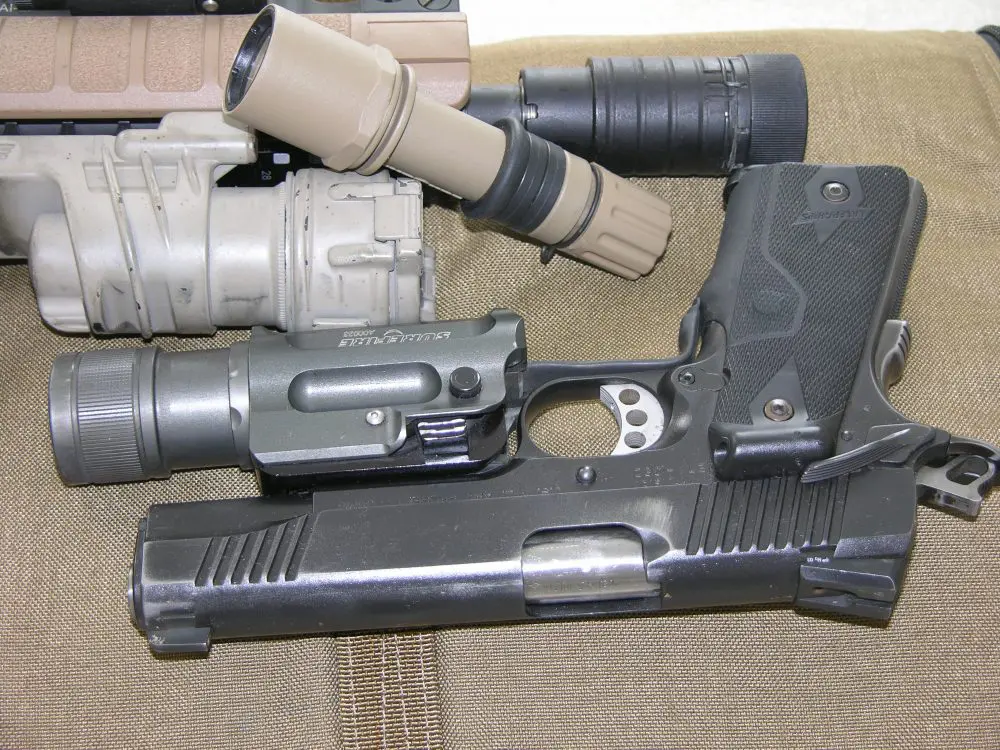I’ve been behind the gun for over 42 years. I was instructed on ranges “way back when” and observed many variations of ranges being run “way back when” too. I have run ranges both by myself and with other highly qualified individuals for longer than I care to remember.
Someone recently asked me how many ranges I’ve run in my lifetime. I don’t know how to answer this except to say it’s a lot. Make no mistake that there is definitely an art to running ranges both safely and practically.
I would have thought that over the years, all training would have made a significant upgrade. This pertains not only to the efficacy of the training but, more importantly, to the safety exhibited while doing so. But this does not seem to be the case. To be sure, some very qualified and verified instructors and range curricula are out there, but they are not in the majority.
I observed one police range wherein the instructor had all officers face uprange with one hand on top of their heads. On command, all jumped in the air, pivoted, drew, and commenced to unleash rounds one-handed at targets some distance downrange. Rounds impacted all over the berm with little or no discernible accuracy exhibited. The purpose of this “evolution” escapes me to this day. Apparently if you have zero field experience, you just make this stuff up.
YouTube has produced many real head scratchers. The safety aspect (if it can even be called that) is beyond abhorrent. Basic students firing over, under, and around each other, and both students and instructors downrange while others fire are nothing short of a trauma surgeon’s nightmare or dream (depending on your take).
If a course of fire or school of instruction advertises that what they do is dangerous, then it probably is. The exhibition of barrel rolls, somersaults, backward firing, leaping in the air, etc while simultaneously conducting live fire seems to be all the rage these days. All of this escapes me. The guys who do this for real do not participate in such drivel, and for very good cause.
One can most probably sustain a ping-pong ball strike to the lips. A badminton shuttlecock strike to the nether regions might be both painful and embarrassing, yet is a recoverable incident. A finger-stuck bowling ball will carry you some distance down the hardwood lane and makes for great hilarity on behalf of your comrades. But sustained bullet strikes are an entirely different matter.
If a thorough safety briefing prior to live fire or any manipulations of firearms whatsoever is not conducted each and every training cycle, you are placing yourself in a hazardous situation. Whether or not a sustained gunshot wound is intentional or unintentional, it bears the same physiological, psychological, and life-altering wound characteristics!
In terms of actual ranges being run, there is most definitely an art to it. A few factors to be considered are time allotment, communications, round counts, practicality of evolutions, adaptability to conditions and range configurations, and debriefs of actual incidents in conjunction with command and control.
This takes time and experience to perfect, and even then there will always be room for improvement. Every course of instruction I conduct provides new insights and experiences. Nothing frustrates me more than an inefficiently run range. You are in fact sending these individuals out into the unknown and that entails much, much more than conducting a mere qualification and time-clock punch.
A true instructor has both empathy and genuine care for those he instructs. You can’t fake this. Students are more perceptive than you might think. I ascribe to the philosophy that “If you don’t care, then don’t be there.” I have taught in some of the most god-forsaken conditions imaginable. The instructor sets the example, plain and simple. I have taught when sick, cold, and exhausted, but always with the thought that somewhere down the line, I would be dry, rested, fed, and well. If not, then it didn’t matter anyway.
I am somewhat intimately familiar with one department in particular. During qualification, some officers would repeatedly fail the “Qual” course. Not once, not a single time in three decades, did I ever observe a single instructor climb down out of the glass air-conditioned booth to assist the officer. Not once. I don’t know what you’d call that, but it’s certainly not instruction, nor is it beneficial.
One issue I have is not marking, taping targets, or painting armor each and every evolution. A target with 400+ bullet strikes disallows one from determining how one is performing. This fact cannot be logically argued against. I cannot correct that for which I cannot perceive to correct.
I distinctly remember my days in the academy at “Hogan’s Alley,” when I would engage a target with more holes in it than a spaghetti sieve. “How’d I do?” “How the hell would I know, Reitz? You probably hit it—now get going.” End of evolution. Lots of fun, though.
Perhaps the most salient point of this column is that a truly invested instructor pays attention to detail, genuinely cares for those s/he instructs, has a real-world verifiable background, can impart knowledge in an efficient manner, and runs evolutions that prepare individuals for that most likely to be encountered.
Experience allows for adaptation, the referencing of real-world shootings and debriefings with no need for a syllabus, and empathy for those who are about to go into harm’s way.
I’ve lost patience with stupidity and nonsensical courses and schools of instruction. As P.T. Barnum once stated, “There’s a sucker born every minute.” My suggestion is, don’t be that sucker.
Scott Reitz is a 30-year veteran of the Los Angeles Police Department and director of the highly acclaimed International Tactical Training Seminars. Course information and schedules are available at their website at www.internationaltactical.com.





